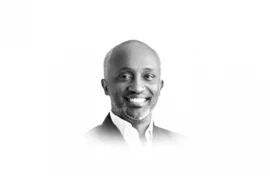Hebron is located not more than 20 miles south of Jerusalem. The largest city in the West Bank, it seems like one huge — and divided — religious site. The Israeli government has split the religious site into two — the Tomb of the Patriarchs for the Jews to pray in and the Abrahami Mosque as the Muslims’ place of worship.
Devotees of both faiths pass through the divided main street to reach their respective places of worship. I wondered if a Muslim, who regularly prays at the Abrahami Mosque, would ever look a Jew, who regularly prays at Tomb of the Patriarchs, in the eye? The dividing wall is not high enough to hide each other’s faces. But it may well be twenty feet high for the two communities that studiously ignore each other. Will they ever greet each other or, at least, acknowledge each other’s presence? Something within me said they wouldn’t.
The Israel-Palestine dispute is so deeply entrenched that it permeates generations and shows little signs of dissipating in the near future. Hebron stands as a symbol of that embedded discord, which is at once religious, territorial, social, political and economic in nature. There can be endless debates about the nature of the conflict, but the lives of millions of people are unquestionably disrupted.
As we walked down that street, I began to blame the wall for everything. The physical barrier seemed to strengthen the mental and psychological barriers that the Israelis and Palestinians have built between them.
From the door of a house on the Palestinian side of the wall, a girl not older than five came running towards me. Perhaps the camera I held in my hand attracted her. Dressed in a purple jumpsuit, her undone hair carelessly fell over her shoulders. She had a sweet smile while she was still close to her door, but as she approached the wall her smile progressively faded and confusion clouded her eyes. She placed her small palms on the wall, which was almost her height, trying to reach me.
As we began our journey on the Israeli side of the city, we were told we couldn’t venture into the Palestinian side. A heavy-set guard, dressed in an Israeli army uniform, had walked towards us briskly, even when we were outside the city limits, and politely threatened us to not have too much interaction with the Palestinian side of the city. Our cameras had further scared that mammoth creature who thought we would disrupt the troubled peace in the city.
Having reminded myself of the bulky Israeli guard, I stopped short of reaching out to the child. Otherwise, I would have taken the child in my arms and let her play with my camera.
It later occurred to me that while the child was still relatively far from me, she could see me. As she came closer to the wall, I became less visible to her because of her height, hence the confusion and sadness in her eyes. The wall in the street helped teach children from an early age about ‘the other’ in this ghost town. It made, what could have been a temporary situation, permanent.
The few hours we were permitted in the city were spent treading slowly on that one main street along the Holy site that meets the Shuhuda Street. Avner, our guide, explained that Shuhuda Street had once been the main street of Hebron. Now it looked colourless, almost lifeless. All we saw was the brown of the dry sandy wind that blew into our eyes and the gray concrete of the streets. Except for a living, breathing Israeli soldier toting a gun in his hand, the only other sign of life was the graffiti splattered on the walls and on shuttered shops.
The Holy Land is divided everywhere, fraught and tense. But in Hebron the division and tension were most palpable. Almost tangible. When you touch and feel something, you cannot deny it even if you close your eyes.
Published in The Express Tribune, Sunday Magazine, June 24th, 2012.

1731479848-0/Elon-Musk-and-Vivek-Ramaswamy-and-Donald-Trump-(1)1731479848-0-165x106.webp)















COMMENTS
Comments are moderated and generally will be posted if they are on-topic and not abusive.
For more information, please see our Comments FAQ